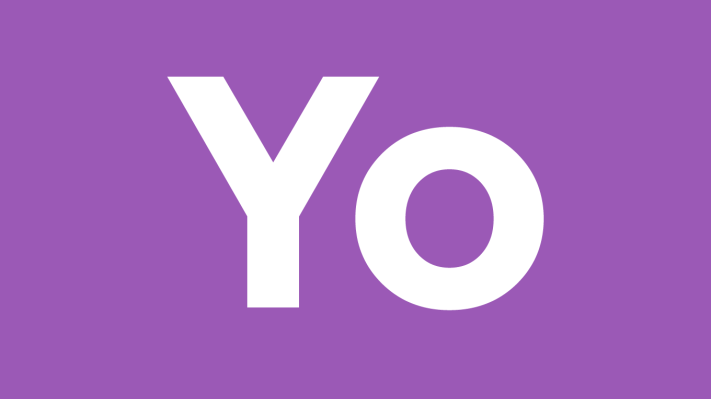Editor’s note: Sangeet Paul Choudary is the director of Platform Thinking Labs and analyzes platforms and network effect strategies at his blog Platform Thinking.
Yo! Is tech turning too stupid for its own good? Attempts at building better healthcare systems do not get the kind of investor interest that a new app called Yo seems to be getting. While the whole world was deriding (and downloading) Yo, the company quietly (well, not quite so quietly) raised further funding at a $10 million valuation.
Is the app worth $10 million? No. Will the app itself ever be worth $10 million? No. Is there the tiniest of possibilities that there’s a billion-dollar potential hidden behind the stupid app? Yo!
Let’s look at a bit of history to set the future of Yo in context.
Competing with Core Mobile Experiences
While the likes of Android and Apple created an extendible platform with the smartphone, they continue to own most of the core user experience of the phone. Angry Birds and Pinterest may create apps for the phone, but they don’t really challenge the core use case of the phone. Most apps typically extend the phone to new use cases.
However, every once in a while, a new experience emerges at the app layer to challenge the core experience of the phone. At the very basic level, these new experiences create compelling substitutes to the core experience. Evernote creates a substitute for the phone’s note-taking app, for instance, and Dropbox for the native cloud sync.
Some substitute experiences take it to the next step and develop network effects in ways that the original experiences did not. Instagram turned the phone into a camera-centric community in a way that the phone’s camera app never had. WhatsApp turned the phone into communities of chatter with much more flexibility than the original messaging app.
But the power of such substitutes can truly be realized when it ends up creating a new standard that dictates the core experience of not just the phone but of any app built on top of the phone. With such a move, the substitute becomes embedded into the platform layer of the phone.
Curiously, Yo has the potential to play in such a space.
Creating a New Standard
As an app, Yo is utterly stupid. Let’s all agree to that. It probably isn’t worth a tiny fraction of its current valuation if we were to evaluate it as an app. But as a platform, Yo has an outside chance at a moonshot.
Alerts and notifications are part of the core use experience of a phone. They come naked into the smartphone platform, and any app built on top of the smartphone leverages the alerts and notifications layer. This is where things get interesting: Yo isn’t about messaging; it’s about alerts and notifications. Yo’s potential to be much more than an app is in its ability to potentially be a platform.
As users, we hate alerts and notifications. No one’s particularly excited about interruptive alerts jumping up on the phone screen. Yet, in a short span of a few weeks, we’ve had millions of people downloading an app that does little more than send an alert. In fact, the alert doesn’t even mean anything, but usage continues to grow.
If the history of standards is anything to go by, standards do not have to be technologically intense, they just need to get adopted fast enough. And Yo seems to be ticking that box for now. The Betamax vs. VHS battle is testament to the nuances of multi-sided adoption that standards require.
For Yo’s moonshot chance at becoming a billion-dollar platform to work out, it has a long road ahead and an arduous journey to get the chicken and egg problem solved. As with all development platforms, it needs to drive rapid and simultaneous adoption among consumers and developers.
Yo has now opened itself as a platform and we’re already seeing “serious” use cases coming up. Israeli missile notification service, Red Alert, is using Yo to warn Israelis of incoming missile strikes.
What Yo has going in its favor right now is the massive adoption among consumers. For all we know, this may just be a fad. But if this massive adoption continues, and if Yo can pull up its platform play and get enough developers building real value using Yo as a notification service for their apps, Yo has the potential to be the next big thing.
The Next Big Thing
The Christensen-Lepore debate notwithstanding, the next big thing has always started out looking stupid. The experts derided Wikipedia for its errors, no one saw beyond the filters of Instagram, Eric Schmidt called Twitter ‘poor man’s email’ and Airbnb was a hipster mattress-sharing website until it completely blindsided the hotel industry.
Will Yo disrupt notifications? We can’t quite say at this point. But having seen the massive adoption, one has to believe that someone will. Notifications need a substitute. And given the massive growth in adoption, Yo may have as good a shot as any at it.
While Yo may have fast-growing consumer adoption going for it, an alternate notification substitute (which will look just as stupid, if not more) may yet gather traction, surpass Yo’s adoption and get taken up by more developers. Any investment in Yo at this point is highly risky, not unlike one in a service some seven years back that allowed you to type 140 characters.
Yo’s success or failure lies in its ability to kickstart a platform for notifications that one day becomes the standard for all apps using notifications. As an app it is little more than Facebook’s poke. But as a standard, it could become embedded in the workings of every other app out there. And that is Yo’s outside chance at venture scale returns.
For all we know, Yo’s brilliance may yet lie in its apparent stupidity.
